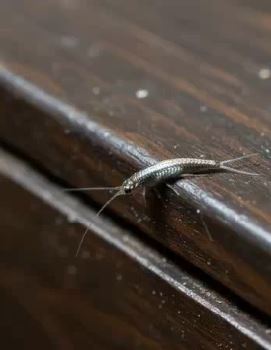
Silverfish are small, wingless insects that have existed for millions of years. Measuring about one and a half inches long, they are silvery in color, with long antennae and a smooth, wiggling movement. Although they do not bite or spread diseases, their presence can indicate areas of high humidity and easily accessible food sources within your home. Bathrooms, basements, kitchens, and laundry rooms are among their preferred environments.
They are drawn to starchy and sugary materials such as paper, cardboard, fabric, and crumbs. If left unattended, silverfish can cause minor damage to books, wallpaper, clothing, and pantry goods. Signs of their activity include yellow stains or small holes in paper and fabric, shed skin, fine black droppings, or peeling wallpaper edges. These indicators suggest silverfish have been active, typically in dark, damp places where they feel secure.
Identifying them early is essential to prevent a larger infestation, as silverfish reproduce quickly and can be challenging to manage if ignored. To remove them, begin by reducing moisture in affected areas. Use dehumidifiers and improve ventilation, especially in bathrooms or basements. Eliminate potential food sources by storing dry goods in sealed containers and decluttering paper, cardboard, or old books. Seal any small gaps or cracks where they might hide, and consider natural deterrents like diatomaceous earth, boric acid, or scents such as lavender and cedarwood.
Traps can also assist in reducing their numbers. Prevention remains just as important as removal. Keep your home dry, tidy, and organized. Properly store clothing, paper, and food items, and maintain good airflow in areas prone to dampness. By managing humidity and reducing food access, you can help keep silverfish away and maintain a clean, comfortable living environment.